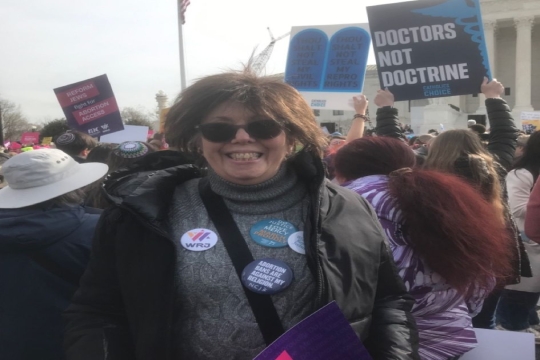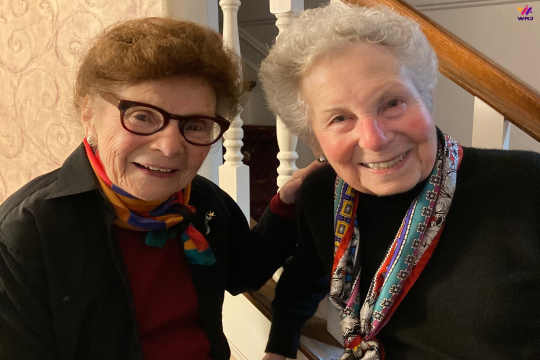
This is such a heavy topic to unpack. We must have difficult conversations to move past bias and truly understand what privilege is by peeling back the layers of institutional racism and oppression.
So, what are bias and privilege? Implicit or unconscious bias operates outside of the person's awareness and can be in direct contradiction to a person's adopted beliefs and values. What is so dangerous about implicit bias is that it automatically seeps into a person's behavior and is outside of that person's full awareness. Part of learning about unconscious bias means realizing that our brains can make assumptions and create mental shortcuts without us even being aware.
Privilege is a special right, advantage, or immunity granted or available only to a particular person or group. Privilege is always difficult to explain and discuss with other folks that have marginalized identities, such as:
- Age
- Birth Sex
- Gender
- Gender expression
- Gender identity
- Sexual orientation
- Nationality
- Religion
- Socio-economic status
- Ability
- Education
- Race
- Ethnicity
The most important point to remember about privilege is just because you have struggled in your life does not mean you are exempt from privilege. Privilege means you did not have to struggle more because of an identity you were born into. Now imagine you are a Black, dark-skinned, transgender woman, poor, college-educated, and Jewish. Although you are college-educated, you will struggle because of all of these identities. You may even have your college admission questioned in the belief it was due to affirmative action. The privilege this person does have is a college education. I paint this picture to demonstrate that we all have some privilege level and need to use it to uplift others.
Many issues influence the level of unconscious bias and privilege a person may hold. Here are some of them.
Cultural Appropriation
Cultural appropriation is the adoption of elements of a minority culture by members of the dominant culture. It can include language, dress, tone, or cadence of speech, or hair. The distinction between cultural appreciation and cultural appropriation often comes down to one thing: intention.
Wearing a sacred indigenous Native American headdress purchased from Amazon for a summer music festival can quickly turn into cultural appropriation. However, wearing earrings made by an indigenous artisan to a tribal pow wow may show cultural appreciation and respect.
Stereotypes
We define stereotypes as widely held and oversimplified images or ideas about a person or group. This kind of quick categorization is problematic because it assumes that all people of a particular group are the same—for example, that all Black people are African American.
Stereotypes are formed by the culture around us, history, the media, movies, TV, our religions, and our own communities. Their formation starts early (as early as five years old) and happens in much the same way as you develop habits. Over time, our stereotypes can become automatic associations—or what we call unconscious biases.
Media
The news reinforces biases by the unequal portrayal of both criminals and victims of crimes. When a person of color is murdered by law enforcement, well, they must have been breaking the law; or the media will use one bad action they did 20 years ago to justify their murder. We have seen mass murders and domestic terrorists portrayed by the media as mentally troubled, had always been a good person, or grew up in a nice neighborhood because of their race. Meanwhile, when the roles are reversed and a person of color is accused of the same or lesser crime, the media finds the most extreme and negative way to present the accused.
Environment
Where you live, work, and grew up all affected building implicit bias. If these environments do not include underrepresented individuals, this can create and maintain negative biases. You can do a quick assessment by asking the following questions:
- Who are your three best friends? - Are they different from you by race, gender, faith, orientation?
- Do you automatically exclude certain neighborhoods as places you might live or send your kids to school? - Why?
- Do you have a gay friend or a black doctor? - Why or why not?
Changing your environment can lead to changing your mind.
Awareness is vital—but awareness alone is rarely effective for change. People need tools and skills so they can take action to change behaviors and interrupt unconscious biases. Without logic as a part of our decision-making, we risk introducing bias into the process.
Make changes by:
- Evaluating your own biases and privileges - Did I assume the Black person in Temple is a convert?
- Acting on changing the way you think about and assess situations. - If I assume a "yes," imagine what would a "no" look like?
- Thinking before you speak - Was that statement "well-intentioned" or a microaggression?
- Preparing for push back. - It is not a marginalized individual's job to educate the majority. Read. Research. Learn.
- Diversifying your community - Expand your professional and personal networks, role model inclusive meetings and gatherings, and start using words that create inclusive environments where people feel that they belong.
This is just the tip of the iceberg, and I invite you to self-educate, ask questions, and be intentional with your actions.
Tikkun Olam.
Courtney A. Johnson-Benson, M.A.Ed. (She/Her/Theirs)
Sr. Assistant Director of Admissions, The University of Akron
President-Elect, Ohio Association for College Admission Counseling
President/Owner - CJB Group
Related Posts

Andrea Stillman: A WRJ Leadership Spotlight

